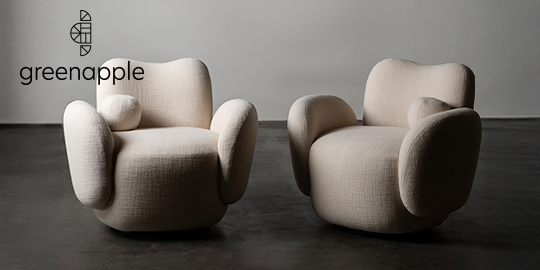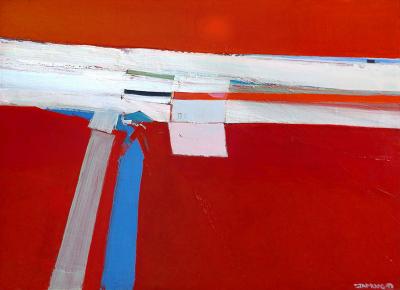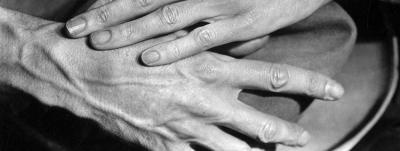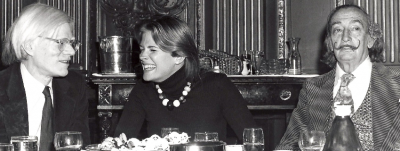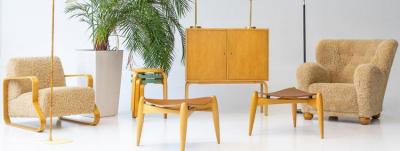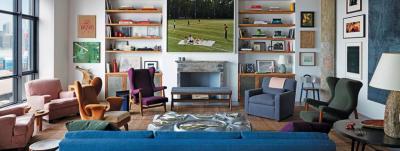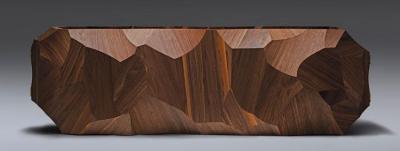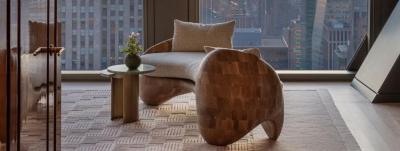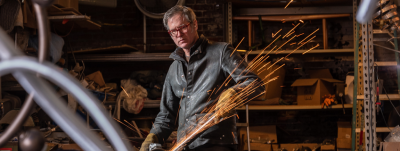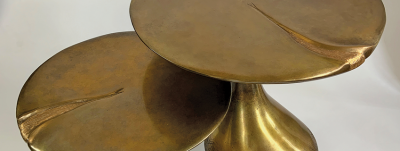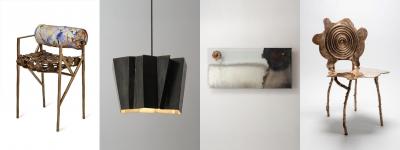Calder and Abstraction: From Avant-Garde to Iconic
What: Calder and Abstraction: From Avant-Garde to Iconic
Where: Resnick Pavilion, LACMA (Los Angeles County Museum of Art)
When: Through July 27, 2014
Contact: www.lacma.org; 323.857.6000
Where: Peabody Essex Museum, Salem, MA
When: September 6, 2014-January 4, 2015
Contact: www.pem.org; 978.745.9500
Calder and Abstraction traces the evolution of abstraction in the artist’s sculptural practice. The exhibition, arranged in loose chronological order, presents highlights of Calder’s oeuvre from his earliest abstract works to the crescendo of his career in the late 1940s to his later public sculptural commissions. While he is considered one of the most popular artists of his time, his work also shares sensibilities with less immediately accessible artists, including the Surrealists and the champions of pure abstraction that made up the Abstraction-Création group, such as Robert Delaunay, Theo van Doesburg, and Kurt Schwitters, among others.
Born in Lawnton, Pennsylvania, Alexander Calder (1898–1976) comes from a lineage of successful traditional sculptors who specialized in canonical carved and cast images. Though he grew up surrounded by artists, Calder originally set out to become an engineer, earning a degree in mechanical engineering from the Stevens Institute of Technology in New Jersey in 1919. After committing himself to an art practice in the 1920s, he traveled frequently between the United States and France, positioning himself as a full-fledged member of the European avant-garde. During the 1920s and 1930s in France, he became friendly with and exhibited alongside Europe’s most prominent artists. With the outbreak of World War II, Calder returned to the United States from Paris. A number of European artists fleeing the Nazi regime sought shelter in America, and with Calder being one of the only artists known to the refugees before they arrived in New York, he became a close ally of the cultural émigrés.
From 1926 to 1933, Calder lived primarily in Paris and was a prevalent figure of the European avant-garde along with peers Marcel Duchamp, Joan Miró, Piet Mondrian, Jean Hélion, Wassily Kandinsky, Fernand Léger, Alberto Giacometti, fellow American Man Ray, and many of the Surrealists. At the time, Paris was the epicenter of creative production, and Surrealism was the most significant artistic movement in France. A number of his works from the 1930s referenced astronomy, a preoccupation shared by a number of avant-garde artists. Calder was fascinated with representing the natural world and the cosmos as potent and brimming with energy: “When I have used spheres and discs . . . they should represent more than what they just are. . . [T]he earth is a sphere but also has some miles of gas about it, volcanoes upon it, and the moon making circles around it. . . A ball of wood or a disc of metal is rather a dull object without this sense of something emanating from it.”
A crucial encounter for Calder occurred in 1930 upon visiting artist Piet Mondrian’s studio. Calder credited Mondrian with opening his eyes to the term “abstract,” providing the catalyst to a new phase in his practice. Calder later described this visit as pivotal in his move towards abstraction: “The visit gave me a shock. . . Though I had heard the word ‘modern’ before, I did not consciously know or feel the term ‘abstract.’ So now, at thirty-two, I wanted to paint and work in the abstract.” Calder appropriated Surrealism’s affinity to curvilinear, biomorphic forms into his sculptures, and when he met Miró in 1928, the two men discovered a mutual admiration for each other’s work and developed a close friendship. As Calder stated, “Well, the archaeologists will tell you there’s a little bit of Miró in Calder and a little bit of Calder in Miró.”
The decade after he met Miró and Mondrian proved to be the most radical of Calder’s career. He embraced the Surrealist notion of integrating chance into his works in addition to the Constructivist idea that painting and sculpture should be freed from their standard constraints, such as gravity and traditional sculptural mass. He consequently developed his two signature typologies: the mobile, a term coined by Marcel Duchamp after a visit to Calder’s home and studio in 1931; and the stabile, named by Jean Arp in 1932.
Calder’s mobiles are hanging, kinetic sculptures made of discrete movable parts stirred by air currents, creating sinuous and delicate drawings in space. Either suspended or freestanding, these often large constructions consist of flat pieces of painted metal connected by wire veins and stems. Stabiles, which were developed alongside Calder’s mobiles but came to full maturity later in his career, are stationary abstract sculptures, often with mobiles attached to them (standing mobiles). In several of Calder’s works from the 1940s—the most prolific decade of his sculptural production—he effectively blended the mobile and stabile forms.
In the mid-1950s, Calder began working with quarter-inch steel (thicker than the aluminum he had used during the 1940s), which enabled him to construct larger, more durable, and more ambitious sculptures and posed him as an ideal collaborator with architects to create works for public spaces. With commissions from the city of Spoleto, Italy (1962), Montreal’s Expo (1967) and Grand Rapids, Michigan (1969, Calder began a virtually non-stop output of public sculpture until his death in 1976. Calder’s public sculpture evolved at a time when communities were becoming increasingly proud of public sculpture, although his resolutely bold abstract forms, though hard to imagine now, were initially met with some controversy. Today, encountering Calder’s iconic sculpture in the center of a city, in front of a courthouse, in the midst of the Senate Office Building, or in front of a museum is a hallmark of postwar public sculpture that he helped to invent.
Calder’s status as an artist was celebrated in countless exhibitions, including seminal retrospectives at New York’s Museum of Modern Art in 1943, curated by James Johnson Sweeney in collaboration with Marcel Duchamp, at the Guggenheim Museum in New York in 1964, and at the Museum of Contemporary Art, Chicago in 1974.
Exhibition Design and Installation
Calder was constantly in conversation and collaborated with other artists and architects in his lifetime, but a major architect has not designed a Calder show since the 1980s. Frank O. Gehry’s design for LACMA’s exhibition allows for quiet areas of contemplation, unexpected juxtapositions of related works, and opportunities for both intimate and panoramic views of the works. Gehry’s gently curved walls frame the sculptures and recall the harmony between art and architecture, emphasizing the organic nature of Calder’s works. Gehry’s own method of developing architectural forms is inherently tactile, sharing some of the same hands-on techniques of a sculptor. With the assistance of technology and effective planning, Calder and Abstraction at LACMA features a selection of sculptures that are animated throughout the course of the day.
Exhibition Catalogue
The exhibition at LACMA is organized by LACMA’s senior curator of modern art Stephanie Barron and designed by Gehry Partners, LLP. The 256-page catalogue Calder and Abstraction: From Avant-Garde to Iconic is co-published by LACMA and DelMonico Books/Prestel. The volume, which includes two-hundred images, is co-edited by Stephanie Barron and Lisa Gabrielle Mark and features essays by Stephanie Barron, Jed Perl, Aleca Le Blanc, Ilene Susan Fort, and Harriet F. Senie, as well as an annotated bibliography and illustrated exhibition chronology.
Calder and Abstraction: From Avant-Garde to Iconic was organized by the Los Angeles County Museum of Art, in cooperation with the Calder Foundation, New York. This exhibition is supported by an indemnity from the Federal Council on the Arts and the Humanities. Funding provided by LACMA's Art Museum Council and Phillips.





